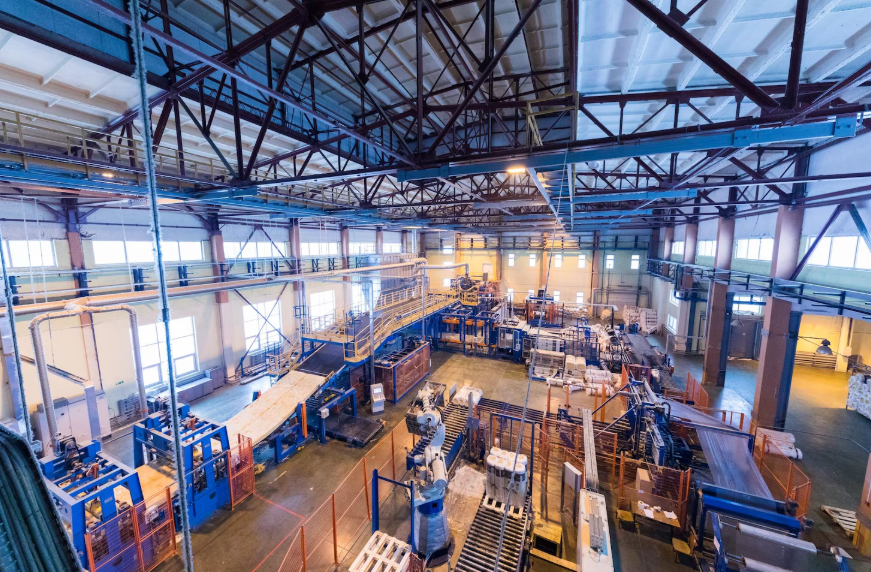Introduction
When we talk about safety in the workplace, most people instantly think of helmets, gloves, or fire extinguishers. But there’s one factor that influences almost every task, every process, and every worker — and it often goes unnoticed.
That factor is lighting.
Good lighting is not just about visibility; it’s about creating a safe, efficient, and comfortable working environment. Whether it’s a factory, warehouse, office, or hospital, proper illumination directly affects performance, morale, and even accident rates.
In this blog, we’ll explore the need, purpose, and benefits of good lighting, and how it contributes to both safety and productivity.
💡 Understanding the Need for Good Lighting
Lighting plays a vital role in how we see, perceive, and perform tasks. Inadequate lighting isn’t just an inconvenience—it’s a safety hazard.
Here’s why every workplace needs proper illumination:
1. To Ensure Safety
Poor lighting is one of the silent contributors to workplace accidents. Workers may trip over objects, misjudge distances, or fail to notice potential hazards. A well-lit environment ensures visibility of walkways, moving machinery, and warning signs.
For example, in a manufacturing plant, proper lighting helps workers clearly see moving parts, sharp tools, and chemical labels. Similarly, in construction zones or warehouses, bright and uniform lighting prevents slips, trips, and falls — which are among the most common workplace accidents.
2. To Maintain Productivity
Ever tried working under dim or flickering lights? It’s not only uncomfortable but also reduces concentration and speed. Employees tend to make more mistakes and get tired faster when lighting is poor.
Good lighting helps maintain energy levels, focus, and alertness throughout the day. In fact, studies show that improving lighting can boost productivity by up to 15% in office and industrial settings.
3. To Reduce Eye Strain and Fatigue
Workers who constantly squint or strain to see clearly often experience headaches, blurred vision, and fatigue. This is especially common in offices, laboratories, and inspection units.
Balanced, glare-free lighting reduces eye strain and allows employees to work comfortably for longer periods — leading to fewer errors and less absenteeism.
4. To Improve the Quality of Work
Lighting directly affects the accuracy and quality of work. Tasks requiring fine details, such as assembly, inspection, or technical drawing, need higher illumination levels. Poor lighting can cause oversight and defects.
Good lighting ensures that every detail is visible, minimizing rework and improving overall product quality.
5. To Enhance Employee Morale
A well-lit workplace feels energetic and welcoming. It boosts mood, reduces stress, and creates a sense of well-being among employees.
In contrast, dull or overly harsh lighting can make the environment depressing and tiring. Many modern workplaces now invest in human-centric lighting—which mimics natural daylight and enhances comfort and mood.
🌞 Purpose of Good Lighting in the Workplace
Good lighting serves multiple purposes — not just illumination. Let’s understand the core objectives behind designing proper lighting systems.
1. Visibility and Clarity
The primary purpose of lighting is to ensure that objects, tools, and surfaces are clearly visible. The right amount of light helps workers perform tasks accurately without confusion or error.
Different activities need different lighting intensities:
- General work areas need moderate lighting (200–300 lux).
- Precision tasks need higher levels (500–1000 lux).
- Passages or storage areas can function with lower levels (100–150 lux).
2. Safety and Accident Prevention
Good lighting makes potential hazards visible — from floor obstructions to chemical labels. It’s particularly critical in industrial plants, chemical units, and construction zones, where one wrong step can cause serious injury.
Emergency lighting also plays a crucial role during power failures or fire incidents, ensuring that workers can evacuate safely.
3. Comfort and Health
Lighting influences our biological rhythm and mental well-being. Harsh glare or flickering lights can cause discomfort and anxiety. Proper lighting design ensures uniformity, balanced brightness, and reduced glare — keeping workers comfortable and healthy.
4. Efficiency and Economy
Proper lighting systems are energy-efficient and reduce maintenance costs. Using LED lights, motion sensors, and daylight integration not only ensures adequate lighting but also saves significant energy.
5. Compliance with Legal Standards
Every organization must adhere to lighting standards specified under occupational safety laws or factory rules. Maintaining proper illumination levels ensures compliance and protects the employer from legal liabilities.
⚡ Benefits of Good Lighting
Let’s explore how good lighting can transform both the workplace and the workforce.
1. Improved Safety
Accidents often occur when workers cannot see hazards clearly. With proper lighting, floor obstructions, steps, and machinery edges become visible, drastically reducing risks.
For instance:
- Well-lit staircases and walkways prevent falls.
- Sufficient lighting in machinery areas prevents misoperations.
- Illuminated emergency exits allow quick evacuation.
2. Higher Productivity
Workers perform faster and more accurately under optimal lighting conditions. Bright, natural-like lighting helps sustain alertness and reduces drowsiness — especially for those working long shifts or night hours.
It’s no coincidence that warehouses, control rooms, and offices with good lighting report higher output and fewer errors.
3. Reduced Absenteeism
When employees experience fewer headaches, less fatigue, and reduced stress, they take fewer sick days. Healthy lighting contributes to overall worker wellness.
Studies show that exposure to natural or daylight-like illumination can even improve sleep patterns, leading to better mental health.
4. Energy Savings
Modern lighting systems can be both safe and cost-effective. LED lights consume up to 60–70% less energy than traditional lamps and last much longer. Smart lighting controls — like motion sensors or timers — ensure lights are used only when needed.
So, good lighting not only enhances safety but also contributes to sustainability and cost reduction.
5. Better Aesthetic and Environment
Lighting defines the look and feel of a workspace. Bright, uniform lighting creates a pleasant environment, encourages teamwork, and reflects professionalism.
For offices and retail spaces, aesthetic lighting also improves customer impressions and brand image.
6. Enhanced Concentration and Accuracy
Under poor lighting, workers often feel sleepy or distracted. Adequate illumination keeps the brain alert and helps maintain attention to detail. This is vital for jobs like inspection, assembly, laboratory testing, and design.
7. Long-Term Eye Health
Continuous work under dim or flickering lights strains the eyes, leading to long-term vision issues. Proper illumination helps preserve eye health, ensuring comfort even during extended working hours.
🔧 Designing for Good Lighting – Practical Tips
Implementing good lighting isn’t just about installing brighter lamps. It’s about creating the right balance between intensity, direction, color, and uniformity.
Here are some practical tips for safety professionals and facility managers:
- Assess Lighting Requirements
- Measure existing illumination using a lux meter.
- Identify areas that need more light — e.g., inspection zones, stairs, or corridors.
- Choose the Right Type of Lighting
- Use general lighting for uniform visibility.
- Add task lighting where detailed work is performed.
- Install emergency lighting for critical escape routes.
- Use Appropriate Light Color
- Cool white light enhances alertness and visibility (ideal for factories and offices).
- Warm white light creates a relaxed atmosphere (suitable for break rooms and reception areas).
- Avoid Glare and Reflection
- Use diffusers and anti-glare fittings.
- Position lights to avoid reflections on shiny surfaces or computer screens.
- Ensure Regular Maintenance
- Clean fixtures periodically—dust can reduce illumination by 30%.
- Replace burnt-out or flickering lamps immediately.
- Optimize Natural Light
- Make use of windows and skylights wherever possible.
- Combine daylight with artificial lighting to save energy and enhance worker well-being.
- Adopt Energy-Efficient Technologies
- Switch to LED lighting systems.
- Integrate automatic controls like occupancy sensors.
- Use daylight dimming controls to adjust brightness automatically.
📏 Recommended Illumination Levels (in Lux)
| Area/Task | Recommended Lux Level |
|---|---|
| Corridors, staircases | 100 – 150 lux |
| General office work | 300 – 500 lux |
| Inspection or precision assembly | 500 – 1000 lux |
| Machine shop or workshop | 300 – 500 lux |
| Fine electrical assembly | 1000 – 2000 lux |
| Storage areas | 100 lux |
| Control rooms | 300 lux |
(Note: 1 lux = 1 lumen per square meter)
These values may vary depending on national standards or specific industrial requirements.
🌍 Legal and Regulatory Perspective
In India, the Factories Act, 1948 and corresponding State Factory Rules require every workplace to have adequate and suitable lighting.
Some key points include:
- Rule 96 of the Gujarat Factories Rules, 1963 specifies that sufficient and suitable lighting (natural or artificial) must be provided.
- Light intensity should not be less than 50 lux in general areas and 150–300 lux in detailed work areas.
- Emergency lighting is mandatory in hazardous processes or during night operations.
Following these regulations ensures both legal compliance and worker welfare.
🌟 The Psychological and Physiological Benefits
Good lighting doesn’t just help people see—it affects how they feel and perform.
- Natural lighting boosts serotonin, improving mood and motivation.
- Bright, cool light helps maintain alertness during day shifts.
- Warm, dim light in relaxation zones promotes calmness and recovery.
In essence, lighting design can influence behavior, mood, and mental health—making it an integral part of overall occupational well-being.
🚨 Consequences of Poor Lighting
To truly understand the importance of good lighting, let’s consider what happens when it’s ignored:
- Increased accidents and near-miss incidents
- Poor-quality output and production defects
- Eye strain, headaches, and fatigue
- Lower morale and higher absenteeism
- Non-compliance penalties during factory inspections
Simply put, poor lighting costs far more in the long run than what’s saved on electricity or equipment.
🏁 Conclusion: Lighting Is a Silent Safety Partner
Lighting may not make noise like machines or flash like alarms, but it quietly defines the safety, productivity, and comfort of every workplace.
From ensuring clear visibility to uplifting morale, good lighting is one of the most cost-effective safety investments an organization can make.
So, whether you’re a safety officer, factory manager, or employer, ask yourself:
👉 Are your workers seeing clearly — or working in the shadows?
Because when you light up your workplace properly, you don’t just illuminate spaces — you illuminate success, safety, and satisfaction.
Tags: #WorkplaceSafety #LightingStandards #SafetyAwareness #Illumination #FactorySafety #OccupationalHealth
🔁 Readers also enjoyed these blog posts:
- Safety Management’s Role: The Unsung Hero Behind Every Successful Organization
- Safety Management and Its Responsibilities: Protecting People, Preventing Hazards, and Promoting a Culture of Care
- Benchmarking for Safety Performance: A Key to Continuous Improvement
“Start Your Website Journey Today – Exclusive Hostinger Discounts!”

Turn Any Idea into Viral,
Jaw-Dropping AI Videos in Seconds!










